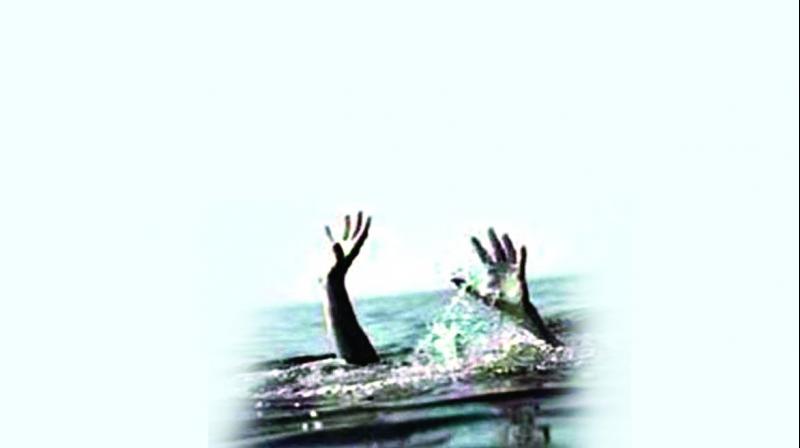Hyderabad: Unlike West, Indian kids still not water competent
Drowning death leading cause of injury-related death among 5-14 years.

Hyderabad: In a research conducted on children younger than 5-14 years of age, drowning is the single leading cause of injury-related death among children in the age group.
Approximately one million deaths of children aged 5-14 years are occurring every year and the causes of death at these ages remain poorly documented.
“All children should learn to swim, and children and teens should wear life jackets while near open bodies of water,” opine experts.
Drowning death rates in India remained unchanged, with higher rates in boys than in girls.
Water competency is the ability to anticipate, avoid, and survive common drowning situations. The components of water competency include water safety awareness, basic swimming skills, and the ability to recognise and respond to a swimmer in trouble. Open space swimming is totally different from swimming in a pool for various reasons like water temperature, water depth, water movement, clothing, and distance.
Pediatrician Dr Preeti Sharma said, “Every child should learn how to swim as swimming is a very valuable life skill. In fact, in many western countries, learning how to swim is mandatory for all children. Besides, swimming is great for health. It improves lung capacity, helps fight obesity, and it is a great complete aerobic workout. However, adequate precautions must be taken.”
About the precautions that need to be taken, she said, “Children should enter swimming pools and other water bodies under strict adult supervision. They should not be diving without proper training. The average depth of pools earlier would be around seven-eight feet, but now swimming pools are usually about four-five ft deep. Diving into such pools can cause injury. Children should take care while swimming at the beach, too, because although it might look shallow because of the waves, there can be a sudden dip, which can throw one off balance in open waters.”
Dr Preeti further said, “Additionally, a lot of children who go swimming in the summer season report eye and ear infections. Utmost care must be taken during swimming to ensure that water does not enter the eyes and the ears.”
Mr John Siddique, the city-based swimming coach, said, “The children should first understand the basics like anticipate the water flow and depth and avoid any obstructions and survive. All of this comes under water competency. The components of water competency include water safety awareness, basic swimming skills, and the ability to recognize and respond to a swimmer in trouble.”
Swim lessons and swim skills alone cannot prevent drowning. Learning to swim needs to be seen as a component of water competency that also includes knowledge and awareness of local hazards/ risks and of one’s own limitations, how to wear a life jacket, ability to recognize and respond to a swimmer in distress, call for help, and to perform safe rescue and CPR.
He further added, “Basic swim skills include the ability to enter the water, surface, turn around, float, then exit the water. Importantly, the performance of these water survival skills is totally different from open space swimming due to various reasons like water temperature, water depth, water movement, clothing, and distance.”
Mr Raja Reddy, a resident of Abids, said, “Most of the swimming pools are not following the norms. The swimming pool management should ensure that all precautions are being taken. Other than in the summer season, the pools are almost always left to be. Due to this, they are becoming breeding sites for mosquitoes.”
“If pools are not maintained properly, the floor of the swimming pool can become slippery and pose the hazard of injuries. Additionally, it can also cause allergic reactions in children. There needs to be proper regulation and implementation as well,” said another parent on condition of anonymity.
“If the pools are not maintained properly, the floor of the swimming pool would become slippery and would lead to injuries. At times, it might also cause allergic reactions to children. There need to be proper regulation and implementation as well,” said another parent, on the condition of anonymity.-

